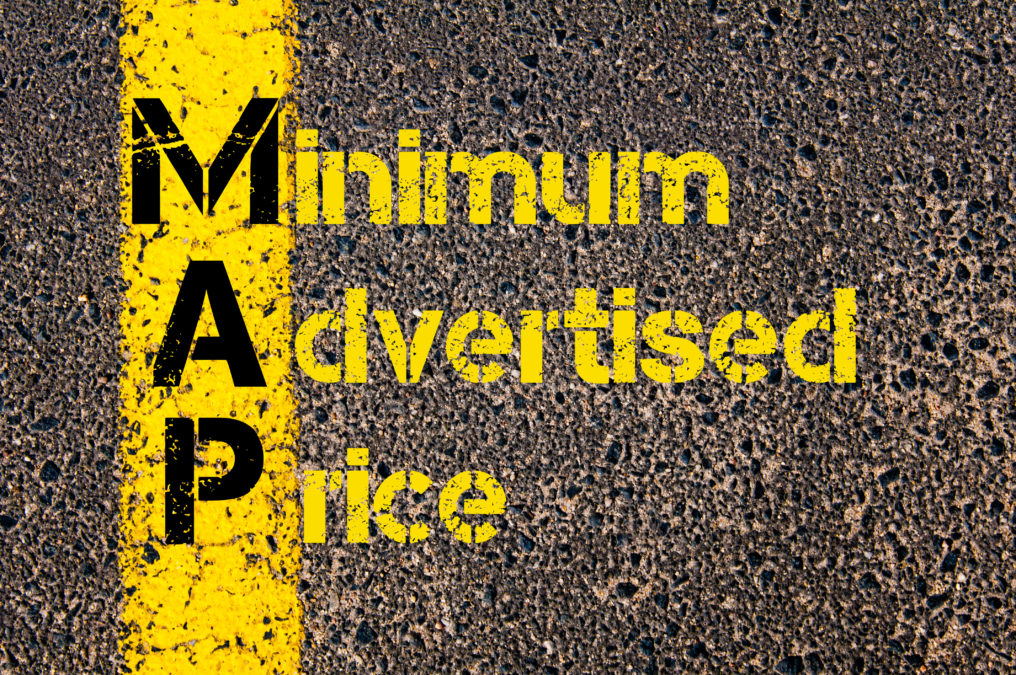As we discussed in Lesson 3, Amazon tends to avoid getting involved when a manufacturer or brand complains that a seller is listing its products without permission on the Amazon marketplace.
Generally speaking, Amazon will take action only if a product listing goes against their own interests. A typical example is when a brand can prove that a seller is illegally using its intellectual property on the Amazon platform. Unfortunately, when the only issue is authorization, meaning a brand claims a seller is listing its products without its permission, Amazon typically refuses to intervene.
Now that you know your brand can’t count on Amazon itself to protect you from unauthorized sellers on its marketplace, another logical question you might ask is this:
Can we use our MAP policy to protect our brand and our legitimate retail partners against unauthorized Amazon 3Ps?
Unfortunately, the answer to this question is largely the same as it was for the question about whether or not Amazon Seller Central will help a brand police and remove unauthorized listings. Your Minimum Advertised Price (MAP) policy does not have any direct mechanism for keeping these unauthorized retailers from selling your products on Amazon. The good news is that there are multiple ways you can leverage your company’s MAP policy to monitor and take action against these rogue sellers yourself.
In this lesson, we’ll discuss the up and downsides of using your MAP policy to thwart unauthorized Amazon 3Ps.
2 Ways Your MAP Policy Will Fall Short of Stopping Rogue Amazon Retailers

Let’s get the bad news out of the way first: Your MAP pricing policy will not function as a silver bullet against unauthorized listings on Amazon. Here’s why.
-
It won’t serve as a deterrent.
A MAP policy is a set of pricing guidelines for the authorized retailers of a brand’s products.
Let’s assume your company has an official Authorized Dealer Program (ADP), meaning interested retailers must apply to become part of your limited network of approved resale partners. Implementing this type of program is considered a brand best practice for two reasons.
First, it allows you more control over which retailers represent your brand to the public, helping you maintain a higher-quality buying experience for your customers. Second, because you can punish and even remove retailers for violating your guidelines, this program gives your resale partners something to lose and a reason to behave in ways that align with your company’s interests.
It’s this second reason that creates the challenge when it comes to unauthorized retailers offering your products on Amazon, and other platforms.
Companies that aren’t authorized to sell your products in the first place won’t care about violating your pricing policy. If you have an Authorized Dealer Program in place, they are already violating the terms of that program every time they acquire your products from your in-house sales teams, your wholesale partners, or other retailers.
The fact that these rogue sellers aren’t in your legitimate retail network also means your MAP policy does not give you any business leverage over them. They have no relationship with you to protect. You can’t threaten to remove a seller from a retail network they were never in.
-
It won’t persuade Amazon to get involved.
As Amazon makes clear in its seller terms and conditions, the company will not enforce the reseller pricing policies of a brand or manufacturer. Amazon views product pricing on its marketplace as an issue to be settled between brand and seller.
Moreover, as noted in Lesson 2, Amazon’s official policy is that more competition and lower prices are benefits for the marketplace’s customers—not problems to be solved. The company won’t remove a listing simply because the brand claims the retailer doesn’t have its permission to sell the product. Amazon also won’t admonish a seller or remove its listing just because the brand complains that the listing violates its MAP pricing guidelines.
Note: You’ll even need to watch for Amazon itself violating your MAP policy.
There’s one additional point worth noting here, to underscore how little value Amazon places on brands’ MAP pricing policies.
One avenue that many brands take to gain access to the enormous Amazon marketplace is to sell their inventory wholesale to Amazon Retail. This massive retail sales arm of Amazon then lists these products on its own marketplace, often competing directly with the brand’s other authorized dealers.
In its vendor agreements, Amazon Retail states it will honor a brand’s MAP policy. But the company also carves out the following exception; If Amazon finds another seller violating the brand’s MAP pricing on a given product, not only on Amazon.com but anywhere on the internet, the Amazon Retail team will drop its listing price to match or beat that MAP violator’s offer.
To clarify, if Amazon finds another retailer violating your MAP policy, they will often follow suit and violate it as well.
When Amazon begins offering your products below MAP on its marketplace, your other retailers will feel the pressure to do the same. They know how difficult it is to compete with the powerful Amazon Retail under any circumstances. But if Amazon is also underselling your authorized dealers (pricing its listings below your MAP levels), those retailers might feel they have no choice but to violate your MAP pricing policy just to give themselves a fighting chance.
Pro Tip: If Amazon Retail violates your MAP, address them just as you would any other seller.
If your company faces the problem above, with Amazon Retail violating your MAP policy, what can you do?
Eugene Zelek, an expert antitrust attorney, author, and TrackStreet legal consultant, suggests that you’ll need to contact Amazon, let them know there are no exceptions to your MAP policy, and threaten to cut them off from future inventory. This is likely to get their attention because Amazon does not want to lose SKUs on its marketplace.
Eugene points out that if you allow this MAP violation to stand because you’re afraid of confronting Amazon, you’re likely to find the problem quickly growing into price erosion and reseller conflicts, which you should fear far more.
2 Ways You Can Leverage MAP to Limit the Damage of Rogue Amazon Sellers
Now for the good news. Having a MAP policy in place and monitoring Amazon and other marketplaces continuously for violations can indirectly help your brand in several ways.
-
It can make it easier to spot unauthorized sellers.
Your MAP policy has the effect of creating price consistency across digital retail channels—and among multiple sellers offering the same products on Amazon. That’s the primary benefit of these policies for a brand. Price consistency protects and enhances brand value over time.
But for our discussion here, consistency in your products’ advertised prices online also has an ancillary benefit: It will help make unauthorized sellers on Amazon stand out.
As we noted earlier, when you enforce a MAP policy, the primary violators will often be the retailers who don’t have authorization to sell your products in the first place. It’s important to keep in mind that you need to be just as vigilant in monitoring your authorized dealers; they can violate your MAP pricing as well.
Remember, one advantage these rogue sellers have over your legitimate retail partners is that they don’t have to honor your pricing guidelines. They can undercut your authorized sellers to win the majority of sales and even the Buy Box, on an Amazon product listing.
So, one way to identify unauthorized sellers of your products on Amazon, which is the first step in removing them, is to monitor your listings for the low-priced or MAP-violating offers.
-
It can slow the price-erosion problem that unauthorized sellers cause on Amazon.
Let’s say you have no MAP policy. Your retail partners find a rogue seller repeatedly winning orders and the Buy Box on Amazon by significantly underselling them. Some of those authorized dealers will follow suit and lower their own prices; they may believe that they have no choice if they want to remain competitive. This could quickly lead to online price erosion and diminish your brand.
As noted above, having a MAP policy in place can make rogue sellers easier to spot. They’ll be the ones listing your products below MAP. But again, there’s a secondary benefit here; the fact that you’re enforcing a MAP policy will deter your legitimate retailers from also violating the policy’s terms just to compete with the rogue sellers.
A MAP policy itself won’t deter an unscrupulous retailer from using dishonest means to acquire your products and list them on Amazon, but it can help you minimize the damage that can occur when one unauthorized seller encourages inappropriate practices from your other retail partners.

